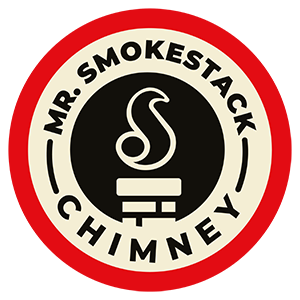Need help? We’re here for you. Call or book something online today.
Reasons a Fireplace May Not Produce Enough Heat
Let’s start with looking into why your fireplace might not be generating, radiating, and holding the heat you desire.
✓ Closed Damper: First, check the position of your damper. Your damper regulates airflow. If it’s closed or only partially open, your fire will be less intense. …and a less intense fire emits less heat than one with an ample supply of oxygen.
✓ Poor Airflow: Poor airflow is a primary reason for reduced heat output in a fireplace. If a chimney is not drawing air properly, fires built in the fireplace will struggle to burn efficiently. Airflow can be impacted by several factors, including blockages or a buildup of creosote in the chimney flue. Regular chimney maintenance and chimney cleaning are essential to ensure proper ventilation and prevent obstructions.

✓ Improper Fuel: Good, hot fires also must be properly fueled. The type and quality of fuel used will significantly impact a fire’s heat production. If you have a wood burning unit and try using wood that’s damp or unseasoned, you’ll have a less hot, less efficient fire compared to one fueled with well-seasoned firewood. Using hardwoods as your primary fuel will also generate hotter fires.
✓ Lack of Insulation: If you have good airflow and fuel, yet the low-heat issue remains, insulation may be a factor. Deficient insulation around the fireplace or chimney can contribute to heat loss by allowing heat to dissipate into surrounding walls or make an escape. Masonry that’s in ill repair can exacerbate these issues.
✓ Incorrectly-Sized Appliance: Mismatching isn’t only a problem in fashion. If the size of a fireplace doesn’t match the size of the room, it can impact heat distribution. Whether the issue is an oversized chimney or one that’s undersized for the space, insufficient heat may be produced or your home heating system may be thrown out of whack.
No Fireplace Heat? Finding a Resolution
Depending on which issues are contributing to your fireplace’s insufficient heat output, a number of solutions are available. If you’re struggling to conclusively identify the source of your problem, enlisting the help of one of our reliable technicians would be a great next step. In addition to helping you pinpoint the factors at play, we can identify issues with a chimney inspection, then implement a solution that will best meet your needs.
For instance, checking the chimney with ventilation in mind may be required. Inspecting the chimney for blockages or obstructions, then clearing out debris, birds nests, or stubborn creosote buildup will improve airflow and enhance heat output. It will also make your chimney system safer to use.
And if poor firewood is the culprit? Simply opting for well-seasoned firewood will instantly improve your fire’s heat output and efficiency, while helping you to maintain a cleaner chimney at the same time.
How can you tell your firewood is properly seasoned? Look for a moisture content reading of ten to twenty percent on a moisture meter, or check for visual and tactile clues. These would include visible cracking, faded color, and relatively lighter weight when compared to newly cut wood. Avoid burning green or wet wood, as it can result in weak, smoldering, and smokey fires.

If your damper is in good repair, verify that it is fully open while the fireplace is being used to allow for optimal airflow. If it is stuck in position or won’t stay open, you’ll want to call your chimney technician to assess and make any necessary fireplace repair services.
Enhancing insulation around your fireplace and chimney may also help give fires a strong start and reduce heat loss. If necessary, installing a chimney liner can also improve efficiency, as well as adding insulation around the chimney chase.
Finally, installing a fireplace insert can be a significant overall upgrade to your fireplace system – one that significantly impacts heat output and efficiency.
What’s a fireplace insert? It’s a unit engineered for performance that is installed into an existing fireplace opening. They typically feature insulated fireboxes, airflow controls, and blowers to circulate heat effectively through the room. If you’re after a fuel type conversion, precision control, or other particular features, now might be a great time to explore what’s possible with a fireplace insert.
Work With Us for a Better & More Efficient Fireplace
Overall, one of the best things you can do to keep your fireplace working optimally is to schedule regular annual inspections and maintenance with your local, qualified chimney experts. A professional can identify any underlying issues, such as draft problems, chimney deterioration, or inefficient fireplace design, and then recommend appropriate solutions to improve heat output, maintain system integrity, and ensure all is operating as safely as possible.
A fireplace that fails to deliver adequate heat can detract from a homeowner’s comfort and be a source of concern. But meeting the problem head-on by addressing common issues can restore – and even enhance – the performance of your fireplace and your enjoyment of it. Whether through simple adjustments or targeted upgrades, take action to restore your fireplace’s heat output and meet chilly evenings with the cozy embrace of a roaring fire. We’re here to help! Call or book online today.
